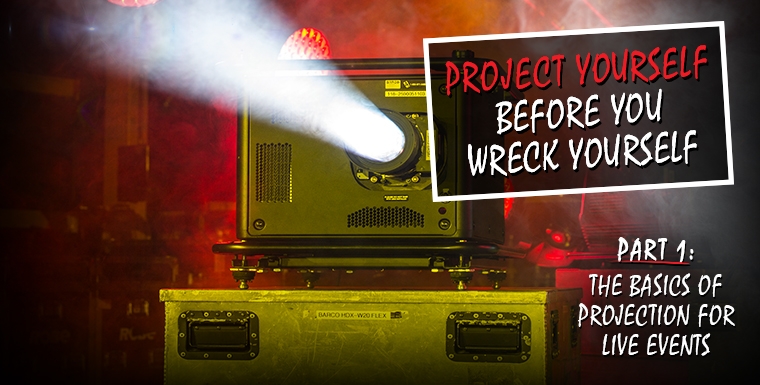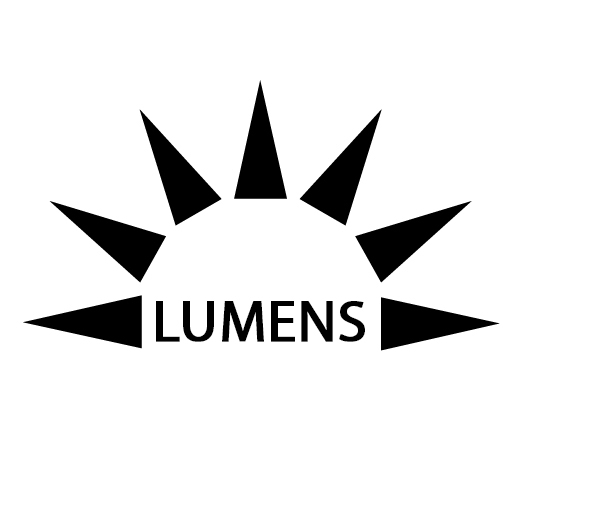Project Yourself Before You Wreck Yourself - Part 1: The Basics of Projection for Live Events

Today we are joined in the lounge by 4Wall's Video Product Strategy Manager Greg Parker. Greg joined 4Wall almost a year ago when 4Wall acquired video equipment provider Wagner Media, Inc. He is a manufacturer certified instructor for Barco Projection and Image Processing products.
Last summer, we created a Lighting 101 video series explaining fundamental stage lighting principles for the incoming Wagner employees and those not familiar with the lighting industry. Greg had created something similar except his pertained to video. He's put together an outline of video basics that is a great learning tool for 4Wall employees who have little, to no experience in the video world. The content gathered is extremely informative and we want to share it with you in a 4-part blog series dubbed 'Project Yourself Before You Wreck Yourself.'
Part 1: The Basics of Projection for Live Events
Projection
 Lumens are a measurement of light energy, and projectors are primarily rated according to how many lumens they produce. We carry projectors of varying brightness ratings from 2k to 30k+ lumens. When a projector with too few lumens is used, the image will appear washed out by any other available light that is hitting the same projection surface. This 'ambient light' has a large impact of the perceived contrast of the image.
Lumens are a measurement of light energy, and projectors are primarily rated according to how many lumens they produce. We carry projectors of varying brightness ratings from 2k to 30k+ lumens. When a projector with too few lumens is used, the image will appear washed out by any other available light that is hitting the same projection surface. This 'ambient light' has a large impact of the perceived contrast of the image.
Projectors and lighting may be referenced in different ways. With lighting gear, you will see 2k Fresnel - where 2k is referring to the wattage of the lamp. Projectors are most often referenced by their lumen output; a 2k projector is a 2,000 lumen output projector.
 If you think of total lumens in a volumetric sense (like a bucket of water), these lumens are spread out over the area of a screen. In this sense, you can think of these lumens per square foot or foot candles, which is how we measure, record, and track projector light output.
If you think of total lumens in a volumetric sense (like a bucket of water), these lumens are spread out over the area of a screen. In this sense, you can think of these lumens per square foot or foot candles, which is how we measure, record, and track projector light output.
Most clients will ask for a certain lumen projector vs what model or type it is. They are mostly concerned with getting the correct amount of light in the area to be projected. If they have a small screen in a dark room they will need a small lumen projector. If they need to fill a larger surface area outside or with ambient light it may require many large projectors to illuminate the area with a good image.
(See the image below) the left side has a lot of ambient light on the screen while the right side does not. To make the image on the left look like the image on the right you would need brighter or additional projectors.
 Light Source Technologies
Light Source Technologies
The light source for a projector comes from various technologies. Classic technologies include UHP or similar type conventional short-arc lamps, and multiple lamps may be used for a single unit (2 or 4 is common). These lamps are based on the same technologies as those found in many moving lights. High-power projectors may use a single xenon arc lamp, like those in a spotlight. Newer technologies include LED, LED/laser hybrid, and laser light sources. All light sources have trade-offs including price, required power, heat, light color/light quality, and longevity. Conventional lamps are inexpensive, xenon lamps have a natural color closest to video white (6500K), laser and LED light sources have insanely long lifetimes and usually lower power draw. No matter the light technology is used, this light is concentrated and focused into the light engine of a given projector.
Light Engine Technologies
Once light is created and concentrated, it must be modified by some system to create an image on screen. These technologies include DLP, LCD, and LCoS. Because they are the main technologies available for events projectors, we will focus on DLP and LCD.
DLP
 3-chip DLP (Digital Light Processing) is the premier technology in our industry. White light is divided into 3 primary colors (RGB), which is reflected by the tiny mirrors of the DMD (Digital Micromirror Device) and brought together onto the screen to make an image. 3-chip DLP is more expensive and often results in larger, heavier projectors compared with other technologies.
3-chip DLP (Digital Light Processing) is the premier technology in our industry. White light is divided into 3 primary colors (RGB), which is reflected by the tiny mirrors of the DMD (Digital Micromirror Device) and brought together onto the screen to make an image. 3-chip DLP is more expensive and often results in larger, heavier projectors compared with other technologies.
1-chip DLP is less expensive to implement than 3-chip DLP. White light is passed through a rotating color wheel to produce individual colors in order. The single DMD works with these colors one at a time and the result is an image on the screen. This happens so fast that most people do not notice; however, some people are more sensitive to a "rainbow effect" from 1-chip DLP projectors. Also, because the DMD time is shared between the segments of the color wheel, a trade off must be made between brightness and color accuracy. Most 1-chip DLP projectors in the events market have a white or yellow color segment to increase their max brightness. This results in RGB combined brightness of 70% or lower than white brightness. 1-chip DLP usually competes in price and size with LCD.
LCD
 Liquid Crystal Display (LCD) projectors use 3 LCD panels to modify the 3 colors of light. As light passes through the panels, the pixels are darkened to block light that is not wanted on screen, and the 3 colors are combined into an image. Because of this "blocking" nature of LCD, these projectors classically have worse contrast ratio compared to DLP - that is that black portions of an image suffer light bleed, and will appear grey or elevated. Newer LCD projectors are much better in this regard, and the deficit to DLP has been minimized.
Liquid Crystal Display (LCD) projectors use 3 LCD panels to modify the 3 colors of light. As light passes through the panels, the pixels are darkened to block light that is not wanted on screen, and the 3 colors are combined into an image. Because of this "blocking" nature of LCD, these projectors classically have worse contrast ratio compared to DLP - that is that black portions of an image suffer light bleed, and will appear grey or elevated. Newer LCD projectors are much better in this regard, and the deficit to DLP has been minimized.
 | Greg Parker is the Video Product Strategy Manager at 4Wall Entertainment. Greg joined 4Wall almost a year ago when 4Wall acquired video equipment provider Wagner Media, Inc. He is a manufacturer certified instructor for Barco Projection and Image Processing products. |

